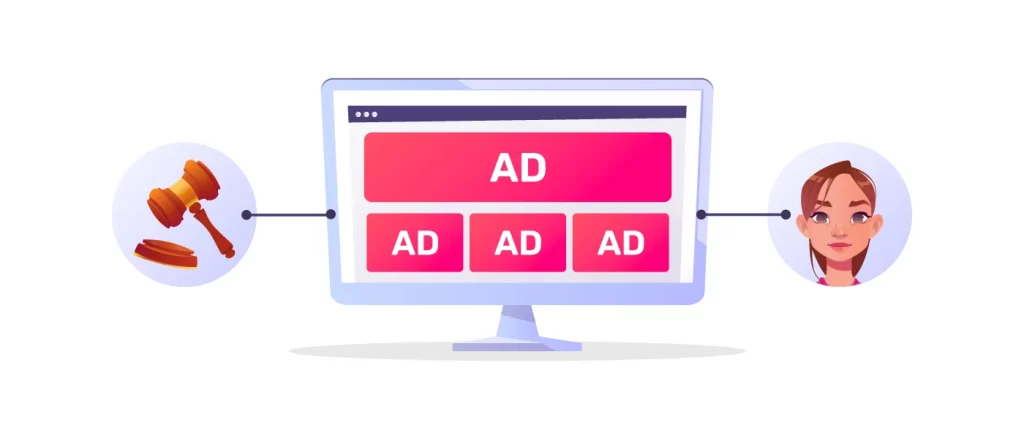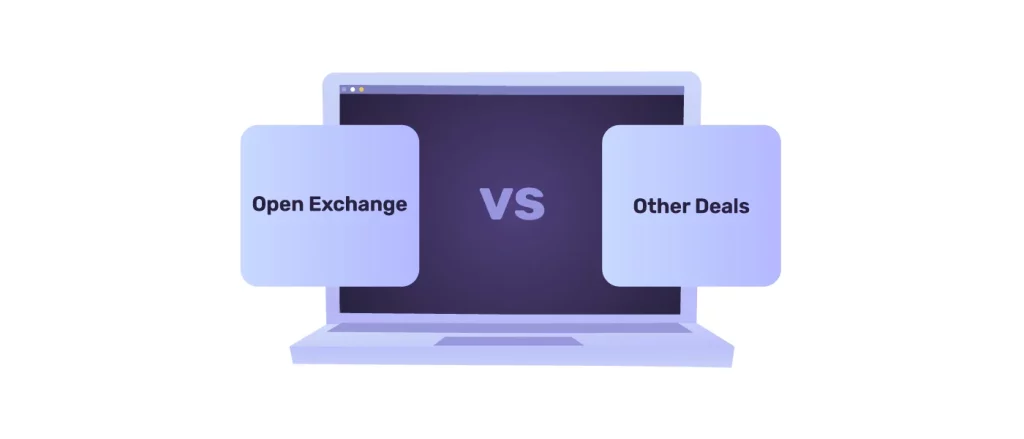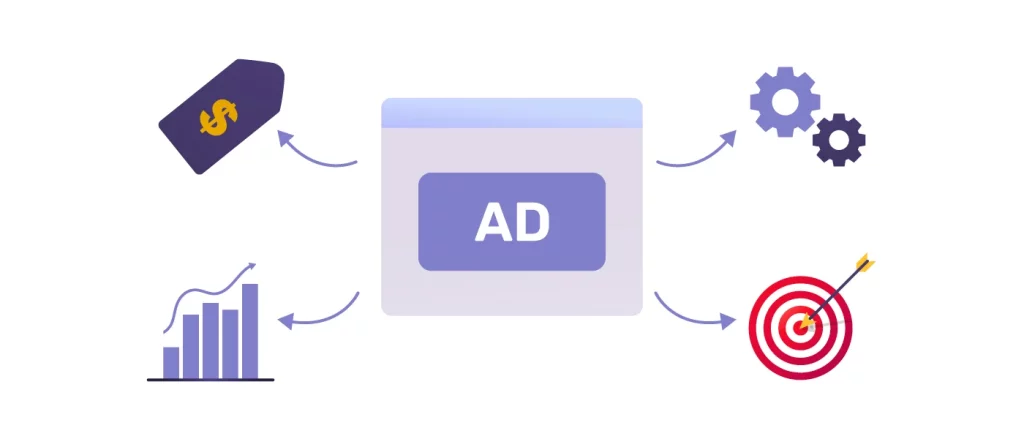Programmatic Open Exchange: What You Should Know
Many terms are floating around in AdTech, and sometimes one just doesn’t click—until you stop and look closer. Programmatic open exchange is a term often appearing in dashboards, reports, or media plans, yet many still struggle to pinpoint what it means. It sounds technical, but that moment of curiosity is a great starting point.
If you already understand the basics of programmatic advertising, learning how ad inventory is traded inside a programmatic marketplace, primarily through an ad exchange, can give you the needed edge. It’s not just about knowing the terms but seeing how they work together.
So, let’s unpack it all. One step at a time.
Table of Contents
What Is a Programmatic Open Exchange?

A programmatic open exchange is a digital marketplace where ad inventory is made available to advertisers through programmatic technology. The keyword here is open, meaning any buyer can access the inventory without needing a direct relationship with the publisher.
You’ll often hear it referred to as an open exchange programmatic, open ad exchange, or simply open marketplace. While these names might sound interchangeable, they all describe the same core concept: a large, open environment where digital ads are bought and sold through real-time bidding.
Ad inventory flows through an ad exchange connected to multiple demand sources. This creates a dynamic programmatic marketplace.
It may seem like just another term in the world of AdTech, but what is open exchange programmatic is a question worth answering, because understanding it sets the foundation for how you approach media buying in today’s programmatic landscape.
How Does a Programmatic Open Exchange Work
- Publishers list their ad inventory.
They make their available ad space visible in the open exchange. This includes websites or apps where ads can appear, as well as information like audience type or ad format.
- Advertisers set their goals.
Advertisers join the exchange already knowing who they want to reach, what kind of ad they plan to serve, and the budget they’re working with. They usually rely on data like user behavior, location, device type, or browsing history—signals gathered through cookies or device IDs.
- The real-time auction begins.
A live auction is triggered instantly when a user lands on a site connected to the open exchange. Multiple advertisers bid for that impression. The highest bid wins.
- The ad gets delivered.
The process is fully automated and happens in the background while the page loads. The auction is usually handled by an SSP (Supply-Side Platform), which connects the publisher’s inventory to multiple demand sources. Platforms like Sevio Ad Manager help optimize this process, giving publishers better control and visibility over their ad inventory.
That’s how a programmatic open exchange runs—fast, competitive, and data-driven.
First-price auctions dominate the open exchange, but how do buyers avoid overpaying? Dive into how Bid Shading helps balance costs →
How Open Exchange Compares to Other Deals

Not every programmatic ad deal works the same way. The open exchange is known for its accessibility. It’s a flexible approach that works when the goal is broad reach and scale.
However, not all campaigns are built the same.
Some brands prefer more control. Publishers select which advertisers can access their ad space in a private marketplace. It’s still programmatic but more selective. A publisher might offer premium placements only to a few trusted brands, which helps reduce fraud and gives better context for the ads.
Other times, there’s no auction at all. With a preferred deal, a publisher offers a specific advertiser the chance to buy inventory at a fixed price before it goes into any auction. It’s still programmatic, just without the bidding part. Think of it as a shortcut for brands that want priority access without locking in a full contract.
Then, there’s a programmatic guarantee, where the ad space is booked in advance. Everything—price, placement, audience—is locked. It feels closer to traditional media buying, but happens through programmatic pipes.
Each method answers a different need. Some offer scale, others control. Open exchange works well when speed and reach matter most. However, when context, brand safety, or fixed pricing become priorities, the more direct methods step in.
Is Programmatic Open Exchange Worth It?
Open exchange lets you join the game without needing an invitation. You don’t need prior deals with publishers—just apparent targeting and a working DSP.
It’s beneficial for campaigns that immediately need visibility, like flash sales or time-sensitive promotions. If you’re launching a campaign that requires scale, this can help you get results quickly.
You also have more control over your actions. You can pause a campaign, shift budgets, or adjust targeting without waiting on a publisher or sales rep.
Other things that make it worthwhile:
- It’s simple to set up;
- It works with many different types of ad inventories;
- You can test and optimize on the fly.
But open doesn’t always mean better.
Knowing where your ad will appear is harder when anyone can bid. Some placements will be strong, and others might not fit your brand. If you care about the context, the open exchange might feel risky.
Also, not all inventory is available here. Premium spaces—like homepage takeovers or video slots—are often sold through private deals or guaranteed buys. That means the most valuable spots might be missing.
What else should you know:
- You don’t always see who’s buying or selling;
- You can’t reserve impressions ahead of time;
- Data about the audience can be limited.
Open exchange has its place. It’s fast, flexible, and efficient. But it doesn’t offer full control. If that matters for your campaign, it’s worth combining open exchange with other programmatic buying methods.
How to Run a Successful Open Exchange Campaign

A good campaign in an open exchange doesn’t rely on luck. It works when everything—from strategy to execution—is aligned. That means knowing what you’re trying to do, setting things up carefully, and being ready to tweak.
It starts with purpose. Why are you running the campaign? If the goal is to drive volume, you’ll approach things differently than if you’re aiming for a narrow, high-intent audience. The open exchange gives you reach, but without clear direction, losing track of value is easy.
Once that’s clear, move to the target. This part often makes the difference. You have access to a lot of inventory, but not all will match your brand. Take the time to define who you want to reach, and just as important, where you don’t want to be.
You might look at:
- Geography, language, and device type
- Time of day and day of the week
- Content categories or domains you trust—or want to avoid
Try to monitor how often your ads are shown to the same person. Repetition can help with recall, but only up to a point. If users keep seeing the same ad repeatedly, they’ll tune it out—or worse, get annoyed. A good frequency cap helps avoid that.
Creatives also deserve attention. They don’t have to be flashy, but they must make sense of the space they appear in. Think clear design, short text, and fast load times. People scroll fast, and your ad has only a second or two to get noticed.
Once the campaign is live, please don’t wait too long before checking its performance. Spend can ramp up quickly in the open exchange, and if something’s off—like bad placements or weak CTRs—it’s better to step in early than to waste half your budget on underperforming traffic.
Some practical things that often help:
- Use blocklists to remove low-value sites;
- Test multiple creatives, not just one version;
- Set floor prices to avoid wasting impressions on underpriced inventory;
- Monitor win rates and pacing daily, especially in the first few days.
Tools like a supply-side platform (SSP) can also help streamline things. If you’re managing inventory as a publisher, platforms like Sevio Ad Manager give more control over what gets shown and how demand is routed. On the buy side, a strong DSP with good reporting is key.
A successful open exchange campaign is a balance. You want to reach, but you also wish to be relevant. You want speed, but not at the cost of waste.
What’s Ahead for Programmatic Open Exchange
Programmatic advertising is still growing—and fast. Spending is expected to exceed $200 billion by 2026, and nearly 90% of digital display ads go through programmatic channels.
We’re also seeing a shift in campaign management. Tools powered by machine learning are doing more work, choosing where ads appear, who sees them, and when. It’s not about replacing people but helping them move faster and test smarter.
Another significant change comes from privacy. As third-party cookies disappear, advertisers focus more on the data they collect directly. That makes targeting in open exchange a bit more challenging but also more intentional.
The formats are changing, too.
- Streaming platforms are opening up space for programmatic ads, and connected TV and video-on-demand are becoming key components of many strategies.
- Out-of-home screens—like digital billboards or displays in public spaces—can now be used in programmatic buys. This brings new flexibility to a format that used to be static.
- Audio is also catching up. More podcast and streaming ads are bought through automated platforms, and that share keeps growing.
FAQ
Bid shading helps advertisers avoid overpaying in first-price auctions by placing smarter, slightly lower bids. It keeps costs down while winning impressions, especially in competitive open exchange environments.
Yes, many open exchange impressions are now won through header bidding setups. For publishers, this means more competition and higher yield; for advertisers, it means faster, more transparent auctions.
If you see low click-through rates, poor viewability, or unexpected placements, something’s off. It usually means your targeting is too broad, your creatives need work, or the inventory isn’t a good match.
It’s a good entry point when trying to get your message in front of more people fast. You’re not chasing conversions here—you’re collecting signals, seeing what sticks, and deciding where to go deeper.
If the message is sensitive or the placement matters, the open exchange might not fit. In those cases, it’s worth choosing an option where you know exactly where and how the ad will appear.
Final Thoughts
There’s no one rule when it comes to media buying. What works today might not work next quarter, so it helps to stay open.
Open exchange isn’t perfect, but it has its place. It gives you flexibility when things need to move quickly, or you just want to test an idea without jumping through hoops. Not every campaign needs guaranteed impressions or hand-picked placements.
Sometimes, all you need is a starting point. And in that sense, open exchange does its job quietly, efficiently, and without much ceremony.
Knowing how it works means you can use it when it makes sense and leave it aside when it doesn’t. There is no hype. It is just another tool in the mix, ready when you are.